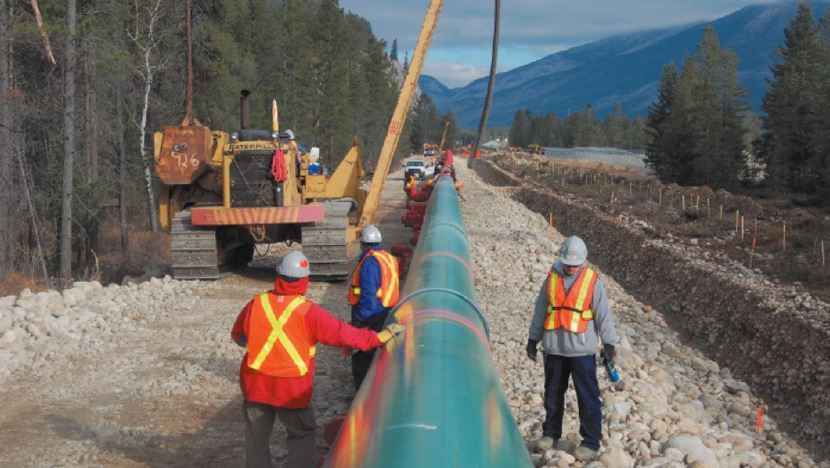Why 2018 was the year of the pipeline

By Peter Kennedy
 Strange as it might sound, 2018 could be remembered as the year of the pipeline.
Strange as it might sound, 2018 could be remembered as the year of the pipeline.
It is true that in the resource sector, the shift in focus to battery metals attracted a lot of investor interest and will continue to do so. (more about that later).
But when one looks back at the major business stories of 2018, pipelines were a dominant theme. The proposed $7.4 billion expansion of the Trans Mountain Pipeline weighed so heavily on the minds of Canadians that the fortunes of political leaders, including Prime Minister Justin Trudeau, now appear to rest on whether or not it proceeds.
Alberta Premier Rachel Notley complained that the lack of pipeline infrastructure in Canada is contributing to a steep discount in the price of Alberta bitumen in comparison to U.S. benchmarks such as West Texas Intermediate. Trans Mountain was supposed to ease that problem by twinning an existing 1,150-kilometre pipeline that runs between Edmonton, Alberta and Burnaby, British Columbia, opening up alternative markets in Asia to Alberta crude.
But now that Trans Mountain is stalled by the Federal Court of Appeal ruling, Notley must play a wait and see game in the hope that Ottawa’s multi-pronged approach to getting it restarted is successful.
Trans Mountain wasn’t the only pipeline that made headlines in 2018.
In early October, three remaining partners in a $40 billion megaproject that aims to export liquefied natural gas to Asia from a port on the west coast of British Columbia formally announced an investment decision.
The announcement triggered the largest private sector investment in Canadian history, a gleeful Prime Minister told a press conference in Vancouver
A week earlier, PetroChina and South Korea’s Kogas announced that they had granted their approval for a plan that would see the LNG Canada consortium build an LNG export facility in Kitimat and 670-kilometre pipeline that will transport natural gas to the coast from northeastern B.C.
The other three partners – Royal Dutch Shell PLC, Malaysia’s Petroliam Nasional Bhd., and Mitsubishi have now approved the final investment decision.
The announcement seemed to show that the LNG Canada partners got it right when it came to the business of holding proper consultations with Indigenous groups. In doing so they underlined key differences between LNG Canada and the approach taken by proponents of Trans Mountain, which was halted by the Federal Court of Appeal on the basis that Canada’s efforts to meaningfully consult with indigenous people fell short.
Canadian Natural Resources Minister Amarjeet Sohi has vowed “to do things differently” in the next round of negotiations with Indigenous groups.
However, the fact that Sohi has yet to provide a time line for completion of those consultations has raised fears that the process could lead to more legal action if any of the Indigenous groups decide that future consultations are inadequate.
Meanwhile, in the mining sector, battery metals continued to attract the attention of investors who are seeking to capitalize on the boom in demand for mobile consumer devices and electric vehicles.
In 2018, that prompted investors to shift their focus away from gold towards to lithium, cobalt and nickel. According to PwC Canada’s 2018 junior mining report it is a trend that is likely to continue as long as those metals remain a key ingredient in battery technology.
In a report, PwC analyzed the top 100 junior mining companies by market capitalization on the TSX Venture Exchange for the year ended June 30, 2018. The aggregate market cap of the top 100 listings rose 6% to $12.9 billion.
The report shows that junior mining investors are placing a premium on successful royalty and streaming businesses. For example, two of the top five companies listed in the report Cobalt 27 Capital Corp. [KBLT-TSXV, 270-FSE] and Maverix Metals Inc. [MMX-TSXV] use a business model that seeks to replace operating and exploration risk with more predictable cash flows from streaming and royalty arrangements.
PwC said junior miners are also beginning to embrace digital technologies with a level of enthusiasm that did not exist prior to the industry downturn a few years ago. Many are investing in automation, artificial intelligence (AI), 3D modelling and the digitization of historical data. They are looking at these tools as a means to boost efficiencies, control long-term costs, navigate through volatile commodity prices and differentiate themselves in the competitive marketplace for investor capital.
“It’s great to see the junior mining sector focusing on innovation and embracing digital technology,” said Dean Braunsteiner, National Mining Leader, PwC Canada. “The broader mining industry has long been accused of lagging in this department and this year’s report shows a different story.
